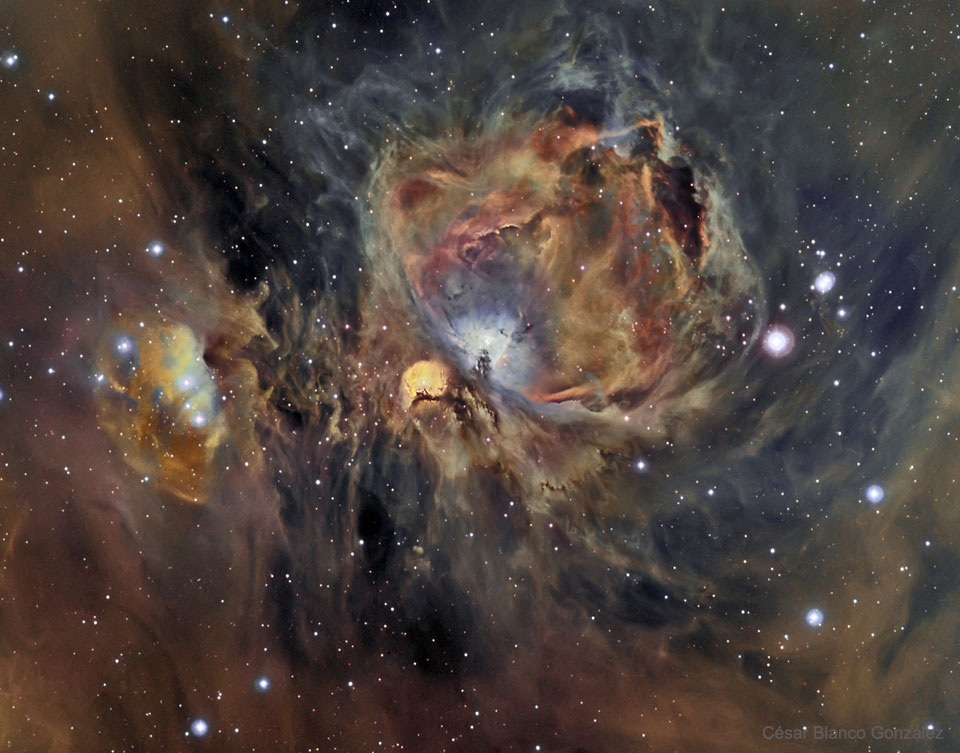2020年10月4日
Orion Nebula in Oxygen, Hydrogen, and Sulfur
Image Credit & Copyright: César Blanco González
Explanation: Few astronomical sights excite the imagination like the nearby stellar nursery known as the Orion Nebula. The Nebula’s glowing gas surrounds hot young stars at the edge of an immense interstellar molecular cloud. Many of the filamentary structures visible in the featured image are actually shock waves – fronts where fast moving material encounters slow moving gas. The Orion Nebula spans about 40 light years and is located about 1500 light years away in the same spiral arm of our Galaxy as the Sun. The Great Nebula in Orion can be found with the unaided eye just below and to the left of the easily identifiable belt of three stars in the popular constellation Orion. The image shows the nebula in three colors specifically emitted by hydrogen, oxygen, and sulfur gas. The whole Orion Nebula cloud complex, which includes the Horsehead Nebula, will slowly disperse over the next 100,000 years.
Tomorrow’s picture: hubble spiral
氧、氢和硫等原子发光波段的猎户大星云
影像提供与版权: César Blanco González
说明: 鲜少有天文景观,能像著名的猎户座星云这个邻近的恒星育婴室,这么善于激发着人们的想像。这个星云的辉光云气,环拱着座落在一个庞大星际分子云里的炽热年轻恒星。而在这幅主题影像里的许多丝状云气结构,其上是激波前沿,在该处,高速移动的物质撞击慢速移动的气体。跨幅约40光年、距离约1,500光年的猎户座大星云,和太阳都位在银河系的同一旋臂上。座落在著名猎户座腰带三星左下方、轻易可辨的猎户座大星云,是个肉眼可见天体。上面这幅主题照片,呈现猎户星云在氢、氧与硫原子气体个发光波段的面貌。包括马头星云在内的整个猎户星云复合体,在接下来的100,000年之内,会慢慢的消散匿迹。
明日的图片: hubble spiral



